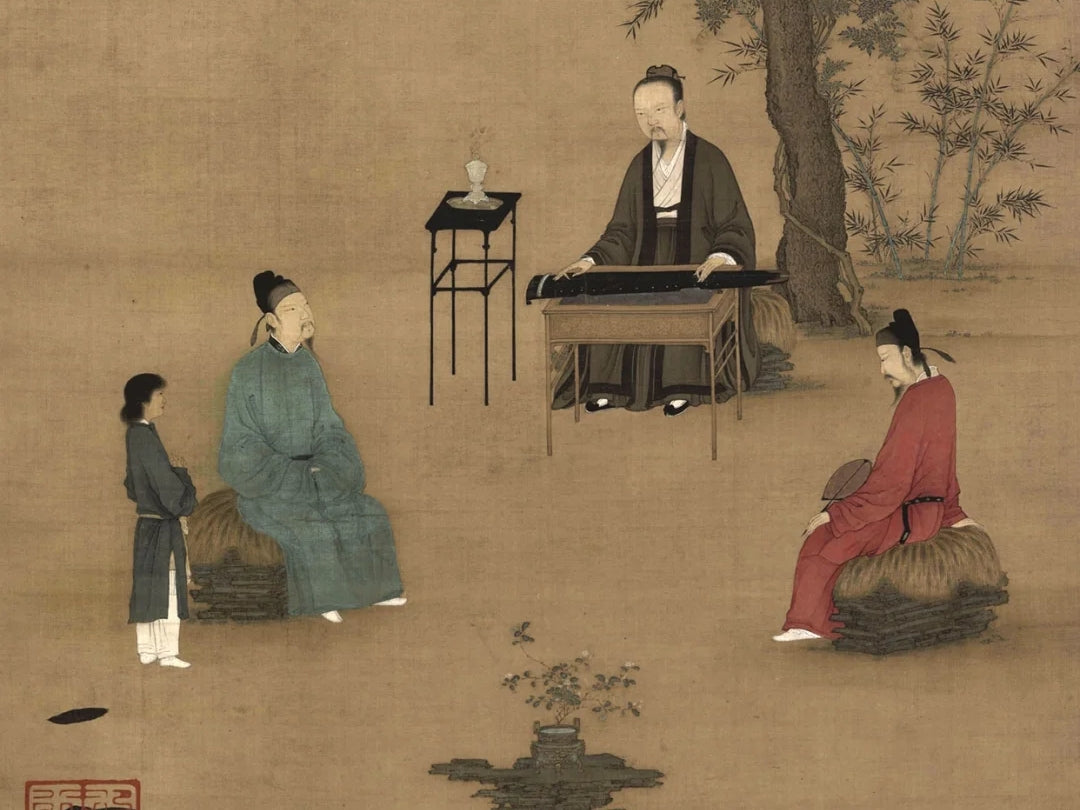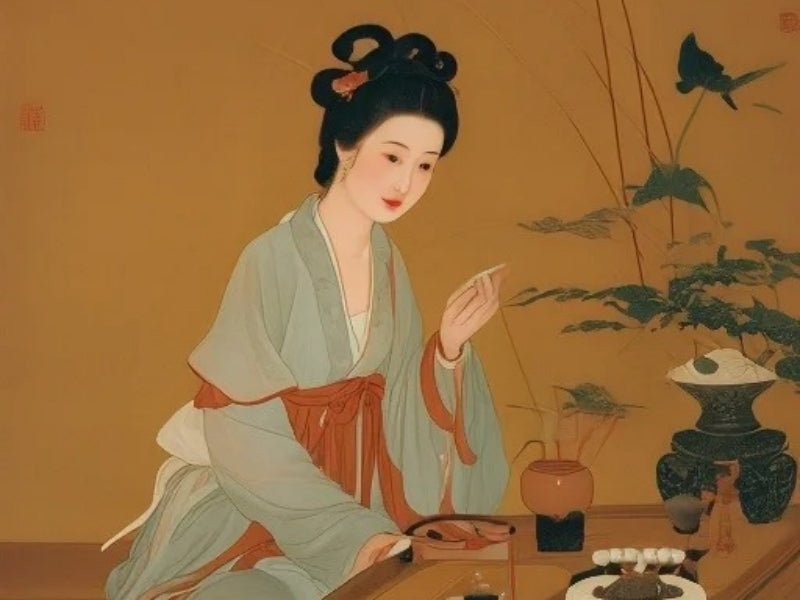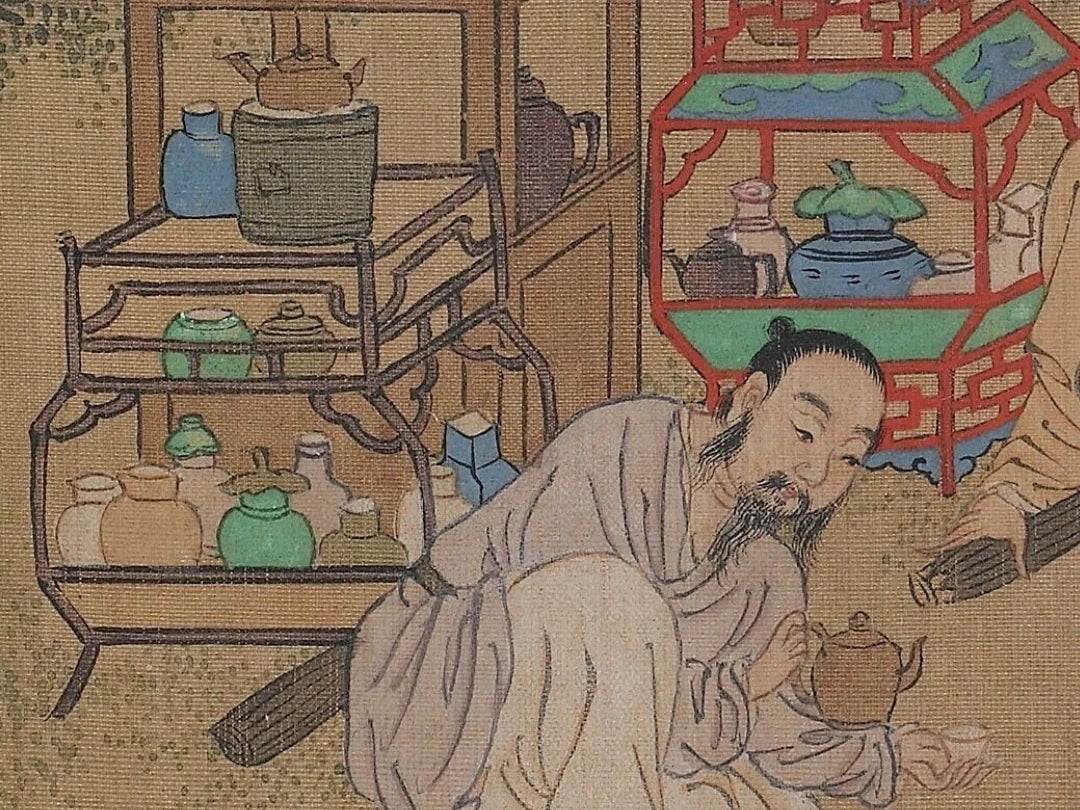What is Incense?
Incense refers to a substance, either natural or synthetic, that produces a pleasant fragrance when burned or applied. It is commonly used in religious ceremonies or as part of daily life rituals.
The history of incense dates back thousands of years when people discovered that various fragrant materials could help clear the mind and soothe the spirit. As a result, it was widely used in religious rituals and daily life. Incense is typically made from ingredients such as tree bark, resin, wood chips, roots, leaves, flowers, fruits, and sometimes animal secretions. These materials are burned or applied to purify the air, offer blessings, or aid in personal wellness and health.
Burning incense is not limited to religious ceremonies but also enhances the atmosphere of a room and improves a person’s mental state. The aromatic smoke released during burning can help relieve stress, purify the air, and express cultural or spiritual beliefs.
Incense as a Lifestyle and Attitude
When drinking tea, lighting incense transforms the noise outside the window into a quiet moment with a cup of tea, allowing worries to dissipate like a delicate fragrance carried away by the wind. It’s about seeing life with a peaceful heart.
When working, burning incense sweeps away fatigue and energizes the spirit, making it easier to face daily tasks with enthusiasm.
When meditating, incense creates a calm atmosphere, helping deepen meditation and regulate emotions with soothing aromas.
During ancestor worship or prayer, incense connects us to the divine through its smoke, conveying our respect and remembrance.

The History and Origins of Incense
China
Origins in the Shang Dynasty (c. 1600-1046 BCE) The use of incense has a long history in China and is an integral part of Chinese culture. Incense in China can be traced back to the Shang Dynasty and even earlier, possibly to the late Neolithic Period. Initially, people used fragrant plants in fire to repel insects and clear the air. The ancient Chinese believed that incense not only served as a medium to communicate with the gods and ancestors but also had a calming, spiritual influence. It was also seen as a means to purify the living environment, cure illnesses, and prevent plagues.
Established in the Qin and Han Dynasties (Qin: 221-206 BCE; Han: 202 BCE-220 CE) Agarwood was one of the earliest incense materials used in China, with its first recorded usage dating back to the Han Dynasty. However, the custom of burning incense goes back even further, to the pre-Qin period. According to the ancient text Zhou Li, pre-Qin incense was primarily used during rituals honoring the heavens and earth. During the Han Dynasty, with the expansion of the Chinese empire and the opening of the Silk Road, tree resins like agarwood and frankincense were introduced to China. Over time, burning incense shifted towards "fumigation," and resins were mixed with herbal incense. This shift is reflected in Han Dynasty poetry, such as "The hundred-flower incense burns in the Boshan burner."

Flourished during the Song Dynasty (960-1279 CE) The Song Dynasty was the golden age of incense culture in China. The use of incense permeated all levels of society, from the imperial court to the common people. Incense culture reached its peak as it became deeply embedded in daily life. Scholars and literati not only enjoyed incense but also took pride in making their own. It was common for friends to gather for incense gatherings or "incense competitions," where they would compare their creations. This era also gave rise to the idea of "viewing the heart through incense."

Declined in the Ming and Qing Dynasties (Ming: 1368-1644 CE; Qing: 1644-1912 CE) During the Ming and Qing dynasties, China’s incense trade suffered due to maritime trade restrictions, which drastically reduced the availability of foreign incense materials. As domestic supplies of wild agarwood dwindled, commercial cultivation began to thrive. By this time, there was a notable difference in how incense was used across social classes—elaborate agarwood carvings became popular in palaces, while simpler, more practical incense was favored by the public. Incense culture declined further from the late Qing into the Republic of China era as many traditional customs faded.
Egypt
Egypt’s use of incense dates back to around 4500 BCE. As early as the Old Kingdom period, Egyptians burned incense as part of religious rituals, offering it to the gods and using it to ward off evil spirits. Incense was also part of mummification, where it was believed to aid in the deceased’s journey to the afterlife. Frankincense, myrrh, and kyphi were among the most commonly used materials. These incense blends, often mixed with ingredients like juniper, cinnamon, honey, and wine, were used to anoint bodies, fumigate clothes, and for various ceremonial purposes. In ancient tombs, archaeologists have discovered distillation equipment and remnants of these fragrant compounds, highlighting the Egyptians' belief in eternal life.

India
The history of incense in India can be traced to the Rigveda (1500-1000 BCE), one of the oldest known religious texts, which details the use of fragrant herbs. India’s incense-making tradition has deep roots in the Ayurvedic medicinal system, with incense sticks, cones, and Dhoop sticks becoming iconic. Agarwood and sandalwood are particularly treasured in India. By 200 CE, with the spread of Buddhism, Indian incense practices began influencing other parts of Asia, including China. Festivals such as Holi feature incense as part of celebrations symbolizing the triumph of good over evil.
Greece
In ancient Greece, incense was primarily used for religious and medical purposes. Temples like the famous Oracle of Delphi often burned incense during rituals to communicate with the gods. The Greeks also believed that the fragrance of incense could help heal illnesses and ward off evil spirits. Fragrant herbs such as myrtle, sage, and bay leaves were burned in homes and temples alike. In both Greek mythology and epic poetry, nature and incense symbolized the unity of body, soul, and the cosmos.

Japan
The history of incense in Japan is closely linked to the introduction of Buddhism in the 6th century. During the reign of Empress Suiko (554-628 CE), a fragrant piece of agarwood drifted ashore on Awaji Island, which is believed to mark the beginning of Japan's incense tradition. By the Muromachi period (1336-1573 CE), incense, along with tea ceremony and flower arranging, became part of the Japanese "arts of refinement." Over time, Japan developed a unique Kōdō ("way of incense") culture, which emphasized the appreciation of incense as a spiritual and aesthetic pursuit. This tradition evolved into a highly ritualized art form, still practiced today.
Common Forms of Incense
Incense Sticks: Incense sticks are typically long and straight, divided into two types: those with a bamboo or wood core (called "core incense sticks") and those without a core (called "coreless incense sticks"). Coreless sticks burn longer and produce less smoke than core incense sticks, making them a popular choice for various settings due to their simplicity and ease of use.

Incense Cones: Incense cones are conical-shaped and made entirely from pure incense materials. They are often used in backflow incense burners, where the smoke flows downward from the base of the cone. This type of incense is ideal for longer burning sessions, making it a great option for home use, meditation, or temples.

Coil Incense: Coil incense is made by shaping long strands of incense into spiral rings, which are then dried and used. These coils are designed for extended burning, offering optimal airflow and continuous scent. Coil incense is suitable for larger indoor spaces, such as homes, temples, or meditation rooms, where a long-lasting fragrance is desired.

Incense Powder: Incense powder is made by grinding incense materials into a fine powder. It can be used to make other incense forms, such as for incense stamps, or burned directly for a more customizable incense experience.


Resin Incense: Resin incense is derived from the sap of trees, which hardens into solidified resin, such as frankincense, myrrh, and dragon's blood resin. Resin incense retains the natural fragrance of its source and provides an authentic aromatic experience.

Sacred Wood Incense: This type of incense is made from specific woods or plant materials, which release their fragrance when burned or heated. Sacred wood incense is often used in religious ceremonies or rituals to create a special atmosphere or for spiritual cleansing.

These forms of incense have distinct characteristics, catering to different cultural backgrounds and usage needs. Whether for enhancing everyday environments or for spiritual purification during religious ceremonies, these types of incense play significant roles in various aspects of life.
What Is Incense Made Of?
Incense is crafted from a combination of incense powder, wood powder, and binding agents, all formed through specific manufacturing processes. Different types of incense vary in material selection, production methods, and intended uses.


Core Materials: Incense Ingredients
Incense ingredients are the primary components, providing the unique fragrance, therapeutic properties, and quality of the incense. These materials are typically derived from natural sources such as aromatic plants and medicinal herbs.
Common incense ingredients include agarwood, sandalwood, and cypress, all known for their distinct scents and health benefits. These are key components in producing high-quality incense.
Additional Materials:
Wood Powder: Wood powder acts as a filler and a binding carrier in the incense-making process, helping to shape and stabilize the incense.
Binding Agents: To bind the ingredients together and form solid incense products, natural binders such as elm bark powder or plant gums are used.
Production Methods:
Traditional Methods: In ancient times, incense was handmade, often rolled or shaped by hand. While modern machinery has increased production efficiency, handmade incense remains a treasured traditional craft that many continue to preserve.
Modern Methods: Today, incense-making is often mechanized. Raw materials are finely powdered, mixed, and pressed into molds, followed by drying and cutting to form finished incense. This method is cost-effective and highly efficient, producing larger quantities in less time.
How to Use Incense
The method of using incense depends on the type and purpose, but here are some general steps and precautions:
1. Preparation Stage
- Choose the Incense: Select the appropriate incense based on the occasion and your preferences, such as incense sticks, cones, coils, powders, or resins.
- Gather Tools: Prepare the necessary tools for lighting incense, such as a lighter, matches, an incense holder (for sticks), or an incense burner (for sticks, cones, coils, or powders).
- Prepare the Environment: Ensure the space is well-ventilated to prevent too much smoke buildup, which could affect air quality.
2. Lighting Incense
- Hold the Incense: Hold the incense gently, making sure not to touch the burning end directly to avoid burns.
- Bring to a Flame: Carefully bring the incense close to the flame of a lighter or match. Keep a safe distance to avoid large flames.
- Ignite the Incense: Light the end of the incense until it catches fire. For incense sticks, blow out the flame gently after ignition and let it burn slowly, producing smoke naturally.
- Place the Incense: Insert the lit incense into the holder or place it in the burner. For coil incense, hang it or position it on a stand.
3. Usage Tips
- Safety First: Be mindful of fire safety. Do not place incense near flammable materials. After use, ensure that the incense is fully extinguished to prevent a fire.
- Control Smoke: Monitor the amount of smoke produced. Avoid letting it become too thick, as it can affect indoor air quality and people’s health.
- Savor the Experience: Take a moment to enjoy the fragrance and calming atmosphere created by the incense. It can help reduce stress and improve your quality of life.
- Respect Tradition: In religious or cultural ceremonies, incense use may follow specific customs. Be sure to observe these practices and use the incense correctly.
4. Using Different Types of Incense
-
Incense Sticks: This is the most common type. Follow the standard lighting steps above, then place the lit stick in the holder and allow it to burn.
-
Incense Cones: Hold the cone by its pointed end and light it with a flame. Due to its shape, you may need to angle it slightly to ensure even burning. After lighting, place it in the burner. Regular incense cones release smoke from the top, while backflow cones release smoke from the bottom, so choose according to your needs.
-
Coil Incense: With its spiral shape, coil incense burns for a long time. Hang it or place it on a stand in a well-ventilated area to ensure the smoke disperses properly.
-
Incense Powder: Incense powder can be used to make custom incense forms like incense stamps. Mix the powder with a binder, shape it, and allow it to dry. Once ready, place it in a burner and light it.
-
Resin Incense: Resin incense comes from tree sap that has solidified. It can be lit directly or combined with other incense materials. Be sure to manage the flame and smoke when using resin incense.
When using incense, choose the appropriate method and tools based on the type and purpose. Always prioritize safety, respect for the environment, and traditional practices. By using incense correctly, you can enjoy its unique fragrance and enrich your life with its soothing effects.

The Benefits of Burning Incense
Burning incense, an ancient and mystical cultural practice, offers various spiritual and physical benefits.
Purifying the Mind and Balancing Emotions
On a spiritual level, burning incense acts as a mental cleansing ritual. As the smoke rises, it seems to carry away distractions, helping to calm the mind. Different types of incense release distinct aromas that influence the brain, helping to adjust emotions and creating feelings of relaxation, joy, or deep contemplation. Many people naturally enter a meditative state while burning incense, reflecting on life’s purpose and gaining inner clarity and direction.
Cleansing the Air and Improving Focus
Physically, burning incense improves air quality. The fragrance freshens the air, eliminates bad odors, and enhances the living environment. Some incense materials can even kill airborne bacteria, acting as a natural disinfectant. Additionally, specific aromas like mint or rosemary can enhance focus and concentration, making them helpful for work or study.
Cultural Traditions and Heritage
Incense burning also plays a vital role in preserving cultural heritage. It’s a significant part of rituals, from honoring ancestors to religious ceremonies, where it symbolizes respect and prayers for blessings. These traditions enrich spiritual life and ensure the transmission of cultural values through generations
Overall, incense offers multiple benefits, both spiritually and physically. It purifies the mind, improves the environment, enhances focus, and plays an important role in cultural traditions, making it a timeless practice in modern life.

Is Incense Harmful to Your Health?
While incense offers many benefits, it can also pose health risks depending on the type of incense, environment, frequency of use, and individual sensitivity.
Potential Benefits of Burning Incense
- Spiritual Well-being: Incense creates a peaceful, relaxing atmosphere, helping to relieve stress and calm the mind. For some, it serves as a source of spiritual comfort.
- Air Purification: Some types of incense release fresh fragrances that mask unpleasant odors and improve air quality. Certain ingredients also have antibacterial properties that can purify the indoor environment.
Potential Health Risks
- Respiratory Irritation: Burning incense produces smoke and particles that, when inhaled, may irritate the respiratory system, causing coughing or sneezing.
- Allergic Reactions: Some people may experience allergic reactions to certain incense ingredients, resulting in symptoms like a runny nose, sneezing, or itchy skin.
- Harmful Chemicals: Incense made with synthetic chemicals may release harmful substances like carbon monoxide, sulfur dioxide, benzene, or formaldehyde. Prolonged exposure to these chemicals, especially in poorly ventilated spaces, can pose significant health risks, including an increased chance of developing cancer.
How to Minimize Health Risks
- Choose High-Quality Incense: Opt for natural, additive-free incense to avoid synthetic chemicals.
- Limit Frequency and Duration: Avoid burning incense in enclosed spaces for long periods.
- Ensure Good Ventilation: Keep the room well-ventilated when burning incense to prevent smoke and particles from building up.
- Consider Sensitivities: If you have allergies or respiratory issues, choose incense with mild, natural ingredients that suit your condition.
By choosing natural incense, limiting usage, and ensuring proper ventilation, you can enjoy the spiritual and physical benefits of incense while minimizing potential health risks.
The above content was compiled by Emily Teng after long-term immersion in incense culture, as well as studying and summarizing various Chinese, American, and other historical documents. If anyone is interested in learning more, please feel free to contact me at any time : Emily@qilingaura.com.



